"A Lady As A Vestal Virgin Circa 1745; Follower Of Jean Raoux (1677-1734)"
In Ancient Rome the Vestals were six priestesses who represented the daughters of the royal house. They were tasked to keep a sacred fire burning on the altar in the temple of Vesta, and were regarded as fundamental to the safety of Rome. The origins of the religion is believed to date to the 7th century BC. These Roman guardians were chosen for their youth and purity and the Vestals were used as models of female virtue in allegorising portraiture of the later West.The guise was particularly popular in the libertine environment of 18th century France – made popular by the discovery of a "House of the Vestals" in Pompeii. Portraits of women as Vestals seem intended as fantasies of virtue infused with ironic eroticism. Later vestals became an image of republican virtue.
This work was painted circa 1745 and is particularly fine in its depiction of the silks and also its remarkable condition.
Several artists, notably Jean Raoux (1677–1734) and Jean Marc Nattier (1685–1766), had depicted portrait sitters in the guise of a vestal virgin, including several of the royal princesses, who were unmarried, and others who sat when they were about to marry.
Jean Raoux (1677-1734) was a painter born at Montpellier, France. Born to a well-to-do city official, he commenced his painterly education in 1693 with a two-and-a-half-year apprenticeship under the local master Antoine Ranc. In 1703 Raoux settled in Paris where he worked under the aegis of highly respected Bon Boullogne and it is then that it is thought that he achieved his first major success garnering the prestigious prix de Rome in 1704 and of which he became famous for his depictions of Vestal Virgins. In 1705 he left for a nearly decade long sojourn to the Italianate peninsular that fundamentally shaped his aesthetic throughout the rest of his career. In about 1714, he returned to France and settled in Paris in the palace of the Grand Prieur de Vendôme. After a brief stay in 1720 in England and then Montpellier in 1723, he went to live with the Grand Prieur, le chevalier d'Orléans, near the Temple headquarters of the Order of Malta in the northern Marais.
He became a member of the Academy in 1717 as a historical painter. His reputation had been previously established by the acclaimed decorations executed during his three years in Italy on the palace of Giustiniani Solini in Venice, and by some easel paintings, the Four Ages of Man (National Gallery), commissioned by the Grand Prior of Vendôme. To this latter class of subject Raoux devoted himself, refusing to paint portraits except in character. The list of his works is a long series of sets of the Seasons, of the Hours, of the Elements, or of those scenes of amusement and gallantry in the representation of which he was immeasurably surpassed by his younger rival Watteau. In 1722 the Regent, Philippe d'Orléans, commissioned Raoux to paint a work, and Philippe subsequently displayed it prominently in his Palais-Royal apartments. Raoux died in Paris in 1734.
Measurements: Height 102cm, Width 84cm framed (Height 40”, Width 33”)



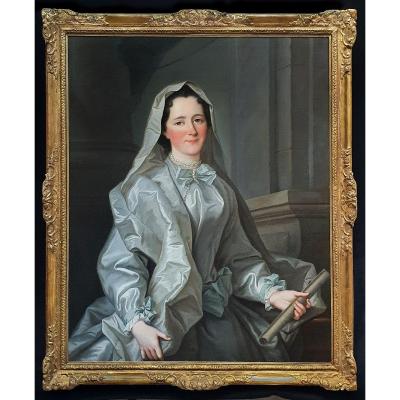
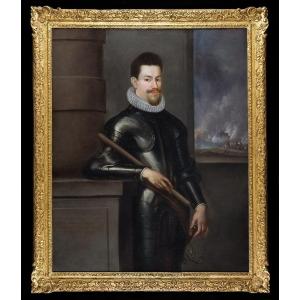


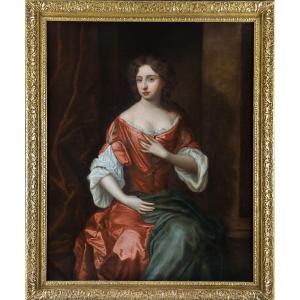

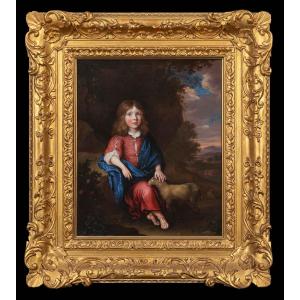
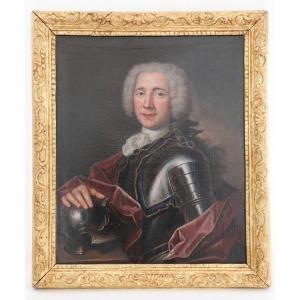
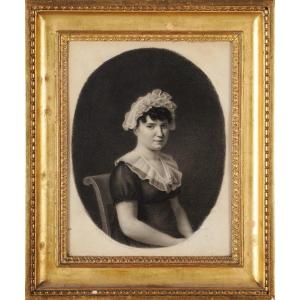

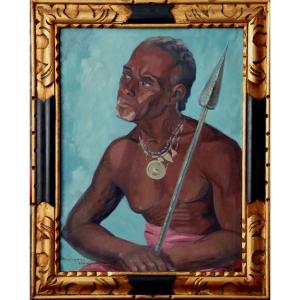






 Le Magazine
Le Magazine Rivista Artiquariato
Rivista Artiquariato TRÉSORS magazine
TRÉSORS magazine







